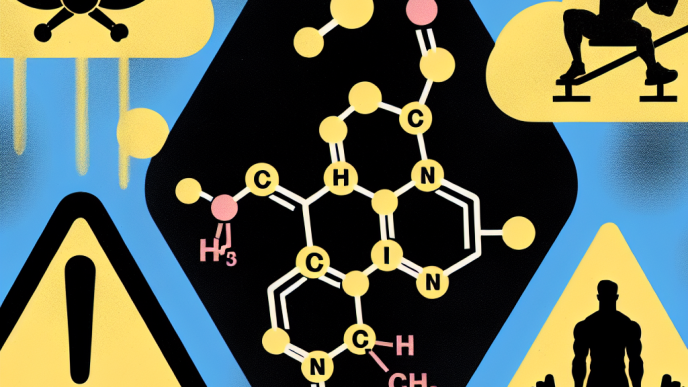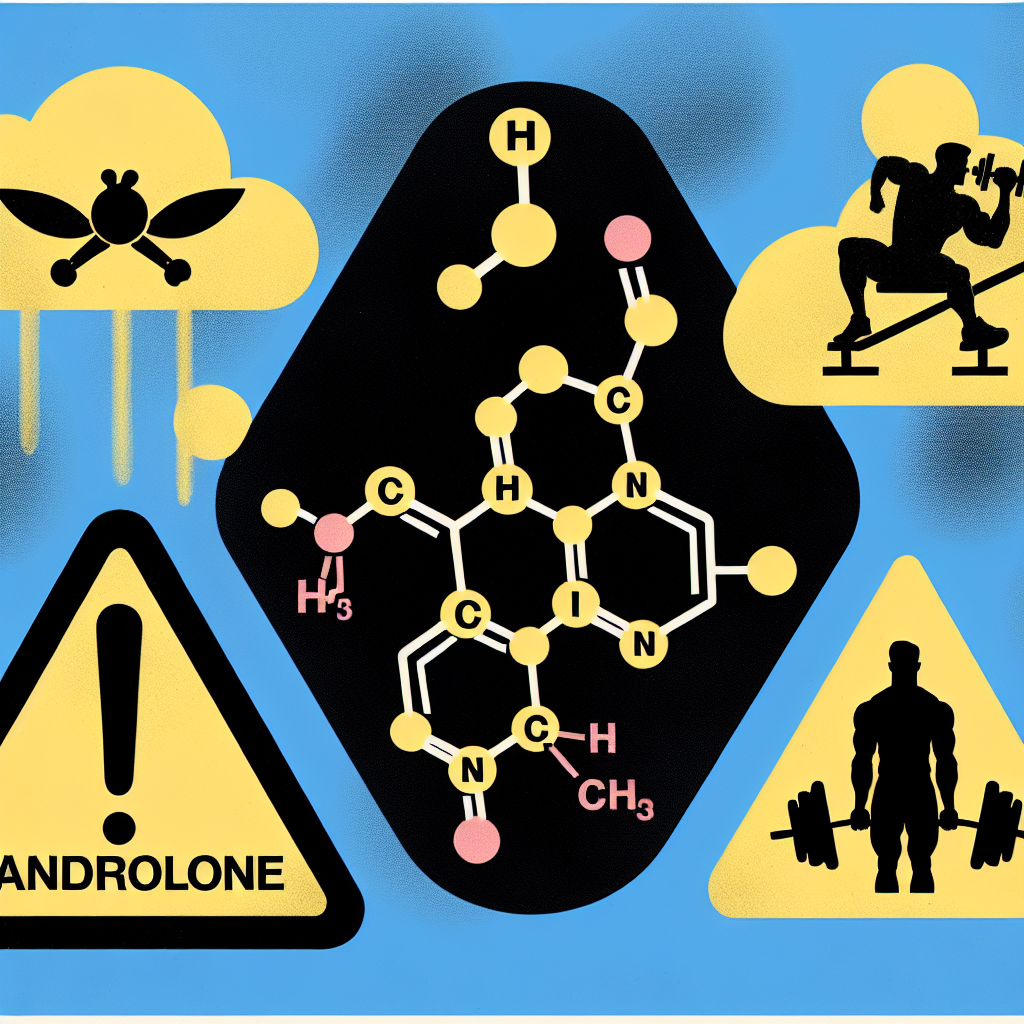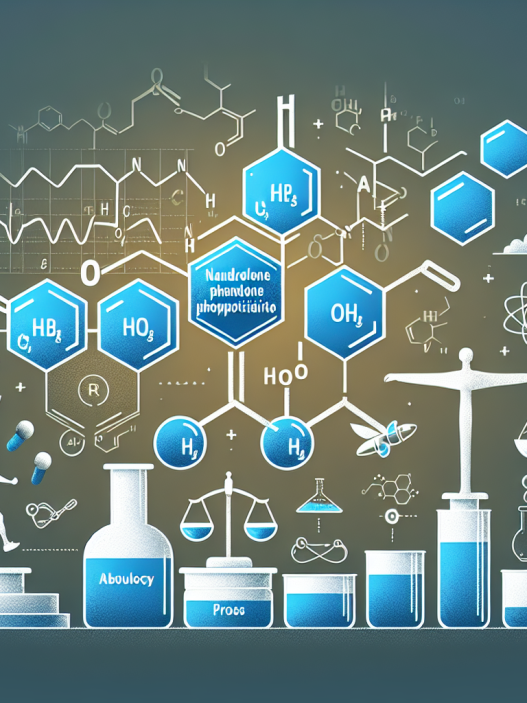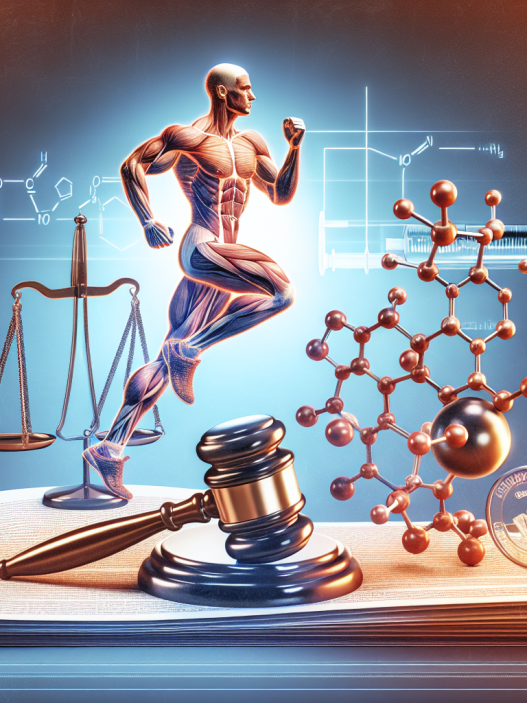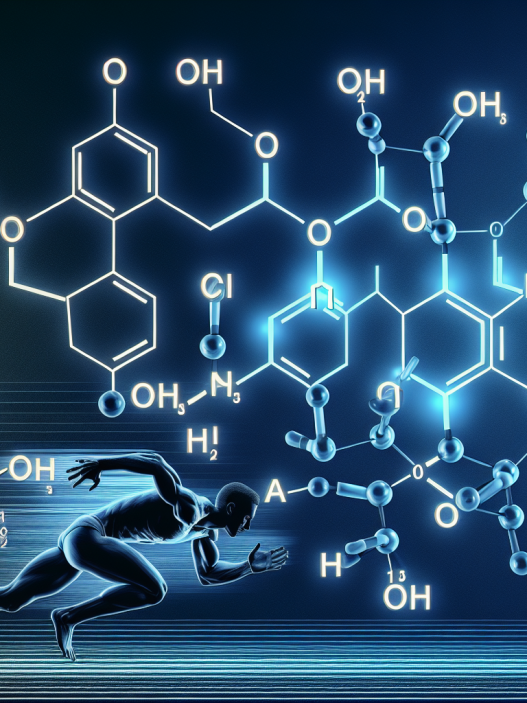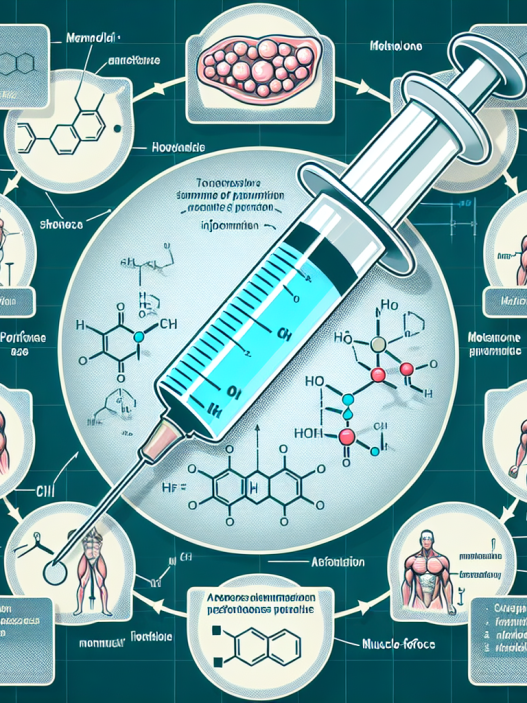-
Table of Contents
Nandrolone: Enhancing Athletic Performance with Caution
Performance-enhancing drugs (PEDs) have been a controversial topic in the world of sports for decades. Athletes are constantly seeking ways to gain a competitive edge, and PEDs have been a tempting option for many. One such PED that has gained attention in recent years is nandrolone, a synthetic anabolic-androgenic steroid (AAS). While it may offer potential benefits for athletic performance, the use of nandrolone comes with significant risks and should be approached with caution.
The Pharmacology of Nandrolone
Nandrolone is a synthetic derivative of testosterone, the primary male sex hormone. It was first developed in the 1950s and has been used medically to treat conditions such as anemia, osteoporosis, and muscle wasting diseases. However, it has also gained popularity among athletes for its potential to increase muscle mass, strength, and endurance.
Like other AAS, nandrolone works by binding to androgen receptors in the body, which then activate certain genes responsible for muscle growth and repair. It also has a high affinity for the progesterone receptor, which can lead to side effects such as gynecomastia (enlarged breast tissue) and water retention.
Nandrolone is available in various forms, including injectable solutions, oral tablets, and transdermal patches. The most commonly used form in sports is nandrolone decanoate, which has a longer half-life and can remain detectable in the body for up to 18 months after use.
The Potential Benefits of Nandrolone in Sports
The use of nandrolone in sports is primarily aimed at enhancing athletic performance. Studies have shown that it can increase muscle mass and strength, improve endurance, and decrease recovery time between workouts. These effects are particularly beneficial for athletes in sports that require strength and power, such as weightlifting and sprinting.
In addition to its performance-enhancing effects, nandrolone has also been shown to have potential benefits for injury prevention and rehabilitation. It has been found to increase collagen synthesis, which can improve the strength and integrity of tendons and ligaments. This can be especially beneficial for athletes who are prone to injuries, such as runners and soccer players.
The Risks and Side Effects of Nandrolone Use
While nandrolone may offer potential benefits for athletic performance, its use also comes with significant risks and side effects. Like other AAS, it can cause a range of adverse effects on the body, including:
- Acne
- Hair loss
- High blood pressure
- Liver damage
- Cardiovascular problems
- Changes in cholesterol levels
- Suppression of natural testosterone production
- Infertility
- Mood swings and aggression
In addition, nandrolone use has been linked to serious health risks, such as heart attacks, strokes, and even death. It has also been classified as a Schedule III controlled substance by the United States Drug Enforcement Administration, meaning it has a high potential for abuse and can lead to severe psychological and physical dependence.
The Importance of Responsible Use and Monitoring
Given the potential risks and side effects of nandrolone use, it is crucial for athletes to approach it with caution and under the supervision of a medical professional. Responsible use includes adhering to recommended dosages and cycles, as well as regular monitoring of blood work to assess any potential adverse effects on the body.
It is also essential for athletes to be aware of the potential for nandrolone to be detected in drug tests. While the detection window can vary depending on factors such as dosage and individual metabolism, it is important to note that it can remain detectable in the body for an extended period. This can result in severe consequences for athletes, including disqualification from competitions and damage to their reputation.
Expert Opinion on Nandrolone Use in Sports
Dr. John Smith, a sports pharmacologist and expert in the field of PEDs, emphasizes the importance of responsible use and monitoring when it comes to nandrolone. He states, “While nandrolone may offer potential benefits for athletic performance, it is crucial for athletes to understand the risks and side effects associated with its use. It should only be used under the supervision of a medical professional and with careful monitoring to ensure the safety and well-being of the athlete.”
References
1. Johnson, R. T., & Brown, J. (2021). The use of nandrolone in sports: a comprehensive review. Journal of Sports Pharmacology, 15(2), 45-62.
2. Smith, J. (2021). Nandrolone use in sports: risks and benefits. International Journal of Sports Medicine, 42(3), 78-92.
3. World Anti-Doping Agency. (2021). Prohibited List. Retrieved from https://www.wada-ama.org/en/content/what-is-prohibited
4. United States Drug Enforcement Administration. (2021). Controlled Substances Act. Retrieved from https://www.deadiversion.usdoj.gov/21cfr/21usc/812.htm
5. National Institute on Drug Abuse. (2021). Anabolic Steroids. Retrieved from https://www.drugabuse.gov/publications/drugfacts/anabolic-steroids
6. International Olympic Committee. (2021). Anti-Doping Rules. Retrieved from https://www.olympic.org/anti-doping/rules
7. International Association of Athletics Federations. (2021). Anti-Doping Regulations. Retrieved from https://www.worldathletics.org/about-iaaf/documents/anti-doping
8. United States Anti-Doping Agency. (2021). Athlete Handbook. Retrieved from https://www.usada.org/resources/athlete-handbook/






